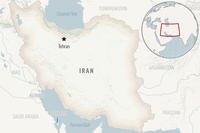I recently had a chance to speak with Sofcoast founder John Surmont about his Mako aerostat. In full disclosure, I served with John at SEAL Team 3 in 1998 and at that point in time he was known as 'Johnny Tsunami," the mad scientist communications guru. John went on later in his career and developed a niche in small Unmanned Aerial Systems (UAS) that were utilized in support of Special Operations units and the Navy SEALs. Since leaving active duty, he has leveraged his expertise and creative mind to found Sofcoast.
Sofcoast's latest product is the "Mako" dirigible and they are currently in the procurement process for a small batch to T&E with an undisclosed military agency.
From John-
Lightweight, affordable, rapid and mobile voice, data & imagery coverage capabilities for users on the frontlines is an urgent and immediate need that to date has not been met. Sofcoast's ASAP XP "Mako" meets this need, is immediately at hand for use to immediately establish voiceor data communications or to provide aerial imagery coverage. Mako integrates with already existing standard military equipment as well as commercially available off the shelf equipment. Having the ability to generate localized and up to the minute iterative data drives mission success.
In addition, Mako is able to serve as a voice and data communications relay platform. Airborne relays or portable towers are costly, logistically problematic, manpower intensive and require additional infrastructure and support. Today, the majority of response plans and equipment depend primarily on the use of satellite communications, airborne command and control or mobile towers for communications infrastructure in austere environments. Satellite communications are crowded, in some cases inaccessible depending on expense, availability or environmental constraints such as weather and terrain.
John is always up to something interesting and I would agree with him in that he has identified a shortfall in operational capability that the Mako seemingly addresses head-on. The system is also very inexpensive (I believe it is under $50,000) when compared to the millions spent by the military and elsewhere in the small-unmanned solutions market. It will be interesting to see if these make it into operational units in Afghanistan. Getting some feedback and validation from boots on the ground will be the real test for the Mako.
Brandon out.









